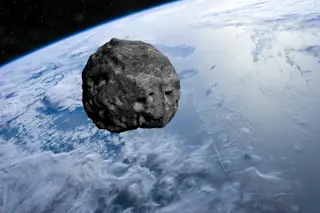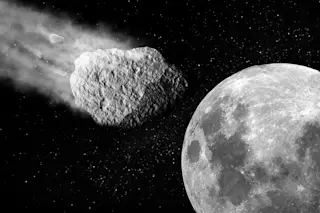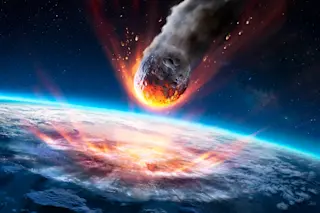Splayed across southern Illinois, Missouri, and eastern Kansas are eight large, gently sloping depressions, 2 to 10 miles wide and an average of 60 miles apart. Although the structures have been reliably dated--they are some 310 million to 330 million years old--no one has been quite sure how they formed. The alignment and similarity of the pockmarks has led some geologists to conclude that a series of subterranean volcanic explosions created them. No volcanic rock, though, has been found at any of the sites. Michael Rampino, a geologist at New York University, believes he has a better explanation. He says the features are the eroded traces of a string of craters formed when pieces of a comet or asteroid broke up and slammed into our planet.
Rampino was inspired by the collision of 21 fragments of Comet Shoemaker-Levy 9 with Jupiter in 1994. Strings of impact structures have been identified ...














